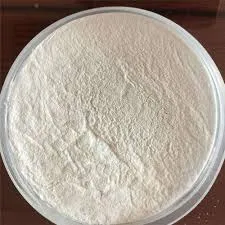
Dez. . 13, 2024 10:08 Back to list
hpmc for gypsum
HPMC for Gypsum Enhancing Performance and Versatility
Hydroxypropyl methylcellulose (HPMC) is a widely used additive in the construction industry, particularly in gypsum-based products. As an essential component, HPMC significantly enhances the properties of gypsum, making it more versatile and efficient for various applications. This article explores the importance of HPMC in gypsum formulations, its benefits, and its role in modern construction practices.
What is HPMC?
HPMC is a semi-synthetic polymer derived from cellulose, featuring both hydrophobic and hydrophilic characteristics. This unique composition allows HPMC to dissolve in water, forming a stable gel-like substance that aids in improving the texture and processability of various materials. Its applicability spans across numerous industries, but its integration into gypsum products has proven particularly beneficial.
The Role of HPMC in Gypsum Products
1. Improved Workability One of the primary advantages of incorporating HPMC into gypsum formulations is the enhancement of workability. HPMC acts as a thickening agent, which alters the rheological properties of the gypsum mixture. This leads to a smoother consistency, allowing for easier application and manipulation during construction processes. As a result, contractors can achieve more precise and aesthetically pleasing finishes.
2. Enhanced Adhesion HPMC increases the adhesion properties of gypsum products. This is especially crucial in applications where gypsum is used as a substrate for tiles or as a finishing layer on walls. The improved adhesion minimizes the risk of delamination and enhances the longevity of installations, contributing to overall project durability.
3. Water Retention Gypsum can be prone to rapid drying, which may lead to cracking or weak finishes. HPMC serves as a water-retaining agent, allowing the gypsum to maintain sufficient moisture during the curing process. This extended workability time is invaluable, particularly in larger projects, as it gives construction teams ample opportunity to work without the mixture drying out unexpectedly.
hpmc for gypsum

4. Enhanced Flexibility and Impact Resistance The incorporation of HPMC into gypsum products increases their flexibility and impact resistance. This characteristic is critical in environments where materials may face physical stress or where flexibility is necessary, such as in seismic regions. HPMC-modified gypsum can better withstand movement without cracking, thereby enhancing the lifespan and performance of the finished product.
5. Versatility in Application HPMC's unique properties make it suitable for various gypsum applications, including plaster, wallboards, and decorative elements. No matter the intended use, HPMC helps optimize the formulation tailored to specific requirements, making it an indispensable part of modern gypsum manufacturing.
Environmental Considerations
The construction industry has seen a heightened focus on sustainability, and HPMC aligns well with environmentally friendly practices. It is derived from renewable resources and can contribute to lower carbon footprints when used in construction products. Furthermore, HPMC's role in reducing waste through improved material efficiency helps promote sustainable building practices.
Conclusion
HPMC is an essential additive for gypsum-based products, providing a multitude of benefits that enhance their performance, workability, and sustainability. As the demand for high-quality construction materials grows, the role of HPMC continues to expand, positioning it as a key player in the evolution of gypsum formulations.
Construction professionals and manufacturers are increasingly recognizing the advantages of using HPMC in their projects, resulting in superior performance and customer satisfaction. As we continue to innovate and improve building materials, HPMC will undoubtedly remain at the forefront, contributing to the continued evolution of the construction industry and helping to meet the challenges of modern building practices.
In summary, HPMC has emerged as a critical component in the development of high-performance gypsum products, ensuring that they meet the demanding standards of today's construction environments while also fostering sustainable practices that benefit both builders and the planet.
-
Versatile Hpmc Uses in Different Industries
NewsJun.19,2025
-
Redispersible Powder's Role in Enhancing Durability of Construction Products
NewsJun.19,2025
-
Hydroxyethyl Cellulose Applications Driving Green Industrial Processes
NewsJun.19,2025
-
Exploring Different Redispersible Polymer Powder
NewsJun.19,2025
-
Choosing the Right Mortar Bonding Agent
NewsJun.19,2025
-
Applications and Significance of China Hpmc in Modern Industries
NewsJun.19,2025







